I was reading Classical Wisdom's newsletter in preparation for this weekend's virtual symposium and found their article "Hephaestus:The Humane God" particularly interesting. Although most of us think of Hephaestus as the divine metalworker that forged magical armor and weapons like the shield of Achilles, Sean Kelly pointed out that he was also the only god in the Greek pantheon (and Roman under the name Vulcan) who suffered from a physical impairment. Hephaestus attempted to intervene in a quarrel between Zeus and Hera, and an enraged Zeus cast him from Mount Olympus, injuring his legs. Thereafter he was the subject of derision because of his lameness although he was respected for his smithing skills. He forged Hermes' winged helmet and sandals, the Aegis breastplate, Aphrodite's famed girdle, Agamemnon's staff of office, Achilles' armour, Diomedes' cuirass, Heracles' bronze clappers, Helios' chariot, the shoulder of Pelops, and even Eros's bow and arrows. This did not prevent him from being referred to as "the lame one" or "the halting" though. However, an inscription found in Knossos, Crete indicates he was still worshipped.
So was this contradiction extended to those who suffered physical impairments in the human realm of the Greco-Roman world?
Classicist Martha L. Rose argues that modern models of "pity, charity, and categorization" were not imposed onto ancient persons with disabilities. Other scholars further observe that although modern categories of disability were not employed by ancient Greeks and Romans, there was the social stigma that individuals who were "unable" to perform some activities fell short of bodily or aesthetic ideals. Garland adds that these individuals were also, at least to some extent, excluded from the religious life of the community, especially from service in priesthoods.
"In classical antiquity as in later times the social response to the handicapped was in part determined by religion, since beauty and wholeness were regarded as a mark of divine favor, whereas ugliness and deformity were interpreted as signs of the opposite. It made a difference, too, whether a disability was congenital or acquired later through disease, accident, warfare, or debauchery". - Robert Garland, The Eye of the Beholder: Deformity and Disability in the Graeco-Roman World.
References to "debilitas" in Rome encompassed both physical and other types of impairment, such as language difficulties, as evidenced in the writings of Cicero and Livy. Aristotle even referred to baldness as a defect which may account for Gaius Julius Caesar's obsessive efforts to disguise his baldness as it could be perceived as him being among those with divine disfavor even though he claimed to be descended from Venus.
Blindness or partial blindness was highly regarded in the Roman psyche. Many individuals became famous after losing an eye. Notably, slaves would sometimes enter gladiatorial matches with a patch over a functioning eye, though historians disagree on whether this was in reference to the mythical cyclops or to make the gladiator appear more experienced. It is also known that many mythological figures, as well as known historical individuals, were thought by the Romans to have been blinded in return for favors from their gods. Such gifts varied from foresight to talent in singing.
Although Roman leaders typically had themselves depicted as physically perfect in statues and coinage, disabilities from injuries received while in the military were seen as marks of honor as opposed to simple disfigurements, with injuries to the eyes appearing most frequently in both common soldiers and famous personalities such as Hannibal. In Commentarii de Bello Gallico, Julius Caesar mentions that the Gauls commonly maimed his centurions, usually by blinding them, mentioning that four centurions out of a cohort were blinded. Soldiers disabled in such circumstances were given a stipend by the state once they retired.
Walter D. Penrose Jr. points out that the ancient Athenians also provided maintenance payments to the "adynatoi" and exempted them from military service. War orphans, disadvantaged by the lack of a father, also eventually received a mandated allowance.
"Diogenes Laertius writes that Solon reduced the allowances paid to victors in Panhellenic games on the grounds that it would be tasteless to increase the honors for these, while ignoring those who had died in battle, whose sons should be supported and educated at state expense," reports Dillon in his paper, "Payments to the Disabled at Athens: Social Justice or Fear of Aristocratic Patronage?"
But, Dillon thinks the actual subsidy was probably introduced as a reform of Periklean democracy rather than any legislation of Solon or Peisistratus. He also doubts the charitable nature of such payments.
"It could perhaps be suggested that Athens was a 'welfare state' that made financial provision for those who could not support themselves, with the Athenians being motivated by considerations of 'social justice' to make provision for those less fortunate than the typical able-bodied citizen. But this does not seem to be the character of Athenian society, even in the age of democracy. Rather, it seems that the Athenians were motivated less by altruistic considerations than by a concern for the democracy itself," Dillon states.
"In providing the adynatoi with a means of subsistence, it avoided forcing citizens who could not support themselves to rely upon wealthy citizens for financial assistance, Dillon says, "Such assistance could have led to the establishment of patron-client links detrimental to the interests of the democracy."
He also notes that the tradition of Peisistratus providing financial assistance to farmers so they could make a decent living was also probably the result of a desire to keep them on the farms and away from the city where they might engage in political agitation.
Of course the Romans of the Republican Period embraced the patron-client relationship as a social model, despite reservations of Romulus as reported by the Greek historians Dionysius and Plutarch, because it was deemed "perculiarly congenial" to Roman politics and lent a sense of familia between citizens. However, as powerful generals began to extend their patronage over entire communities of the conquered or defended, the Republican form of government was doomed.
Both Caesar and Augustus, established client-patron relationships in conquered regions. This can be seen in Caesar’s relations with the Aedui of Gaul wherein he was able to restore their influence over the other Gallic tribes whom where once their clients. Thereafter he was asked on several occasions to serve the duties of a patron by the Aedui and was thus regarded by many in Rome as the patron of the Aedui. Augustus established colonies in all parts of the empire during his conquests which extended his influence to its very furthest reaches. He also made many acts of largess to the whole population of Rome, including food and monetary handouts, as well as settling soldiers in new colonies that he sponsored which indebted a great many people to him, serving his ambitions for power.
You can read more about The Discourse of Disability in Ancient Greece here:
https://www.academia.edu/27820223/The_Discourse_of_Disability_in_Ancient_Greece
 |
| Vulcan by Guillaume Coustou the Younger, 1814, now in the Louvre Museum in Paris, courtesy of Wikimedia Commons contributor Marie-Lan Nguyen. |
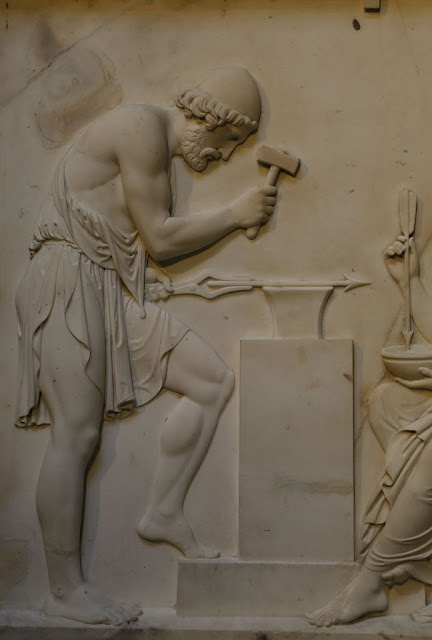 |
| Closeup of Vulcan from a relief depicting Venus, Mars and Vulcan, about 1810, by Bertel Thorvaldsen courtesy of Wikimedia Commons contributor Rufus46. |
 |
| Attic colum crater, Leagros group, 550-500 BCE. Side A: The return of Hephaesos (Hefaistos) to Olympos. Archaeological Museum of Agrigento, courtesy of Wikimedia Commons contributor Zde.) |
 |
| Vulcan (1838) by Herman Wilhelm Bissen (1798-1868). Sculpture in the Thorvaldsens Museum, Copenhagen, courtesy of Wikimedia Commons contributor James Steakley. |
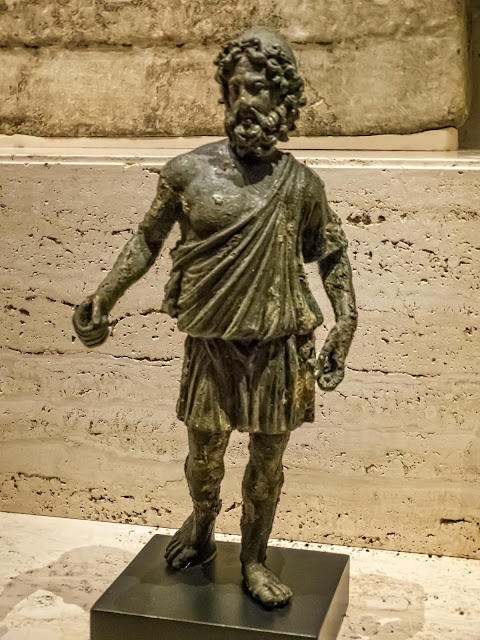

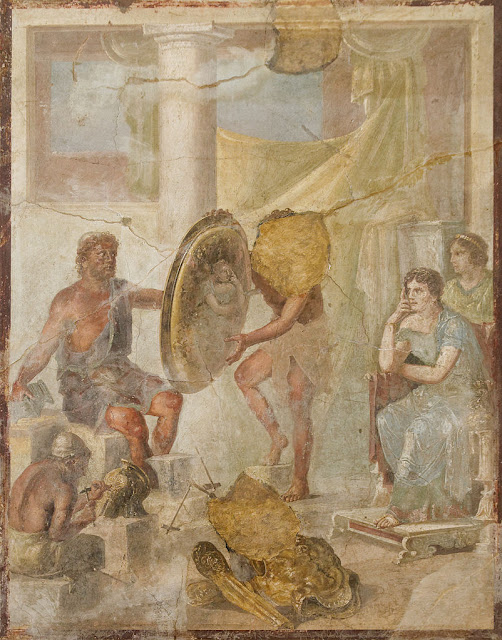

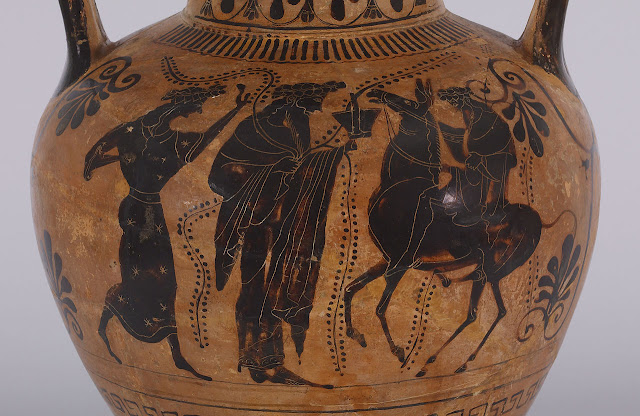
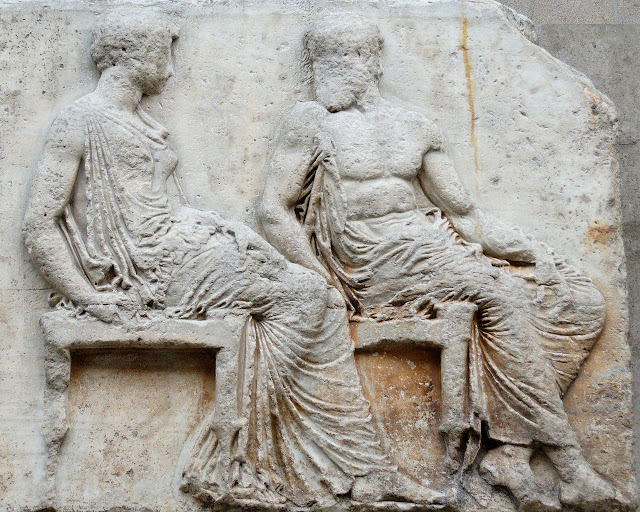

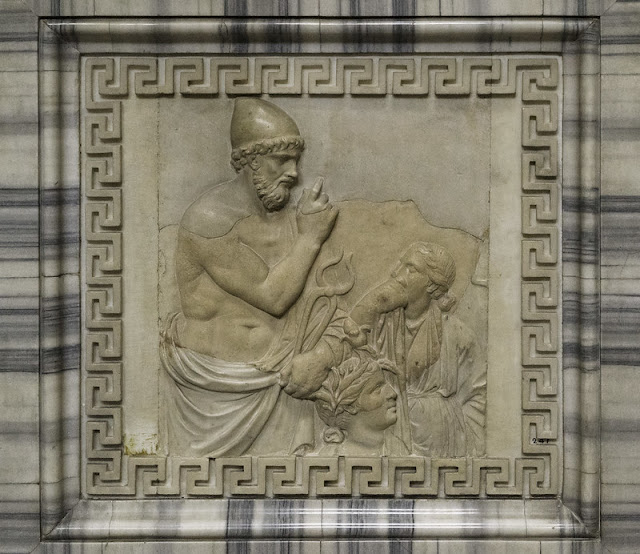


No comments:
Post a Comment